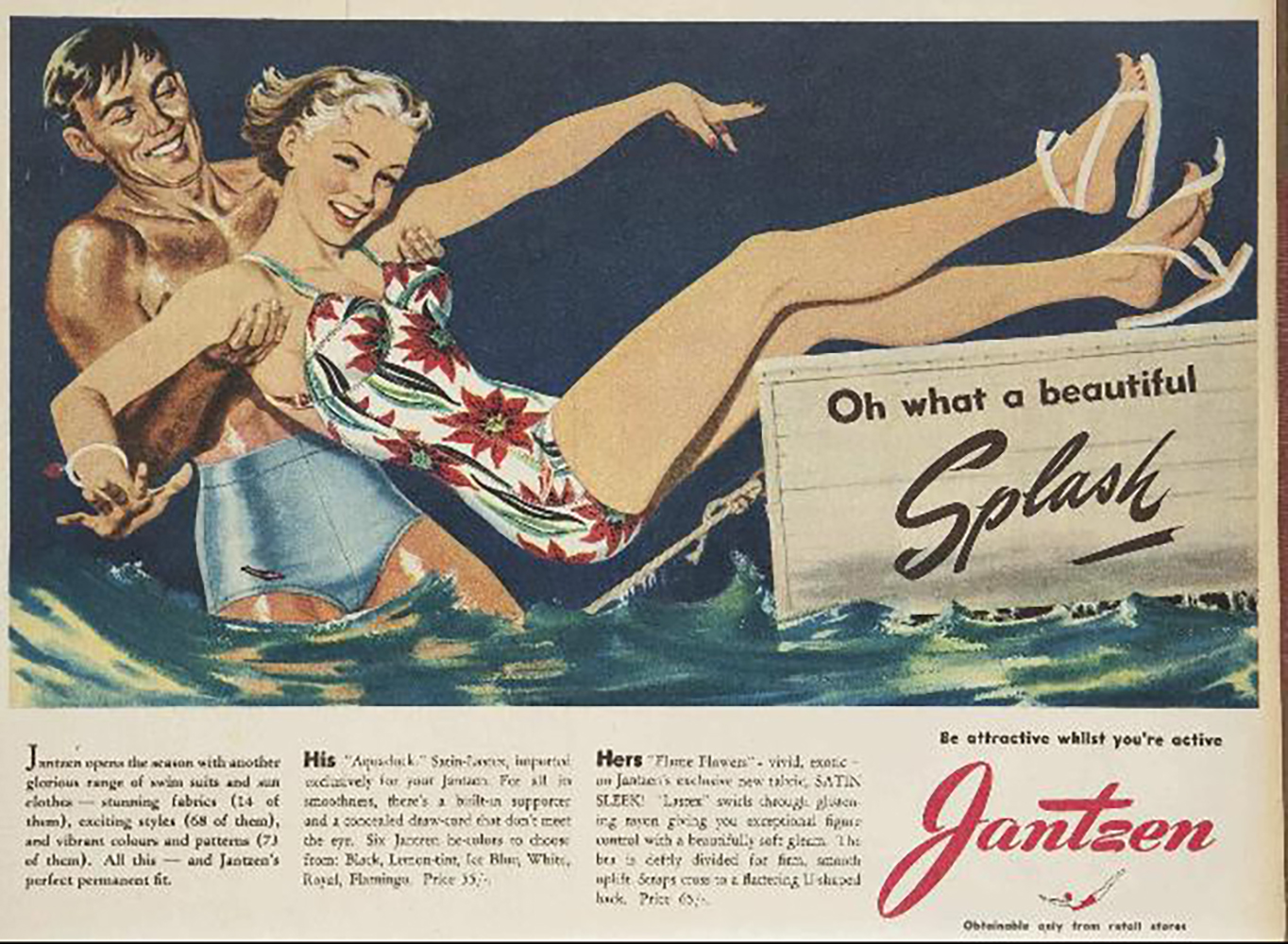Take 5 swimming suits
Shining a spotlight on five of our favourite swimming suits from the collection.
Bathing dresses
1900s
As the sun came up on the twentieth century, many people discovered the pleasures of swimming for the first time. Despite the popularity of the beach, however, public bathing in daylight hours was still strictly outlawed in some areas. By 1903, bathers had begun to flout these restrictions with little fear of arrest, as long as they were decently clothed. While many bathing bans were lifted, authorities still insisted that swimwear cover the body from neck to knee, to preserve dignity and the moral order. Posed in a bushland setting, these three antipodean water nymphs are demurely clad in elaborately impractical bathing outfits for their dip in the creek.
Sand play
1930s
The growing penchant for surfing created a new industry for inflatable floats and beach toys, like this dapperly clad elephant. Rubber replicas of fish, whales, seahorses, giraffes and alligators — and many other animals — came in a wide variety of shapes and sizes. Packing flat and easily inflated when required, they were promoted as accessories for seaside holidays, popular for sport ‘to get rid of superfluous energy’ or for floating ‘blissfully and lazily on the waves without effort’. By the mid-1930s, however, concerns were being raised about the dangers posed by small children losing the support of their surf toys in deep water.
Surf suits
1934
The NSW state government resumed the Bondi foreshore in June 1882, and by 1902 a tramline from the city provided easy access for large crowds of daytrippers. Under the influence of the wool-knit ‘Speedo’ performance garments worn by Australia’s successful aquatic Olympians, surf suits became briefer and more practical. Improvements at the beach in the 1920s included construction of the Bondi Pavilion, which opened in 1929. Advertised as the ‘Playground of the Pacific’, Bondi grew in popularity from the 1930s, drawing not only Sydneysiders but people from all over the world.
Designer swimwear
1950
While Speedo promoted performance, the fashion-conscious preferred Jantzen. With a factory located at Auburn, New South Wales, Jantzen offered a glorious range of his-and-her swimwear. This 1950 advertisement exhorted swimmers to ‘Be attractive whilst you’re active’. Perfect for making a splash at the beach, she wears ‘Flame Flowers’, a vivid and exotic design in Jantzen’s exclusive new ‘Satin Sleek’ fabric, priced at 65 shillings (approximately $175 in today’s currency). Her fun-loving companion wears satin-lastex ‘Aquaduck’ trunks, with a built-in supporter, and available in black, lemon, ice-blue and flamingo.
Spray tans
1954
This image shows industrial chemist John Paterson applying his mutton bird tanning oil, ‘Vita Tan’, to a bikini-clad customer on the Gold Coast. Paterson ran his spray booth concession for 20 years from 1952 and claimed that the mutton bird’s natural preening oil contained a screening medium that filtered out the ‘burn-producing rays’ of the sun but allowed the ‘healthy tan-producing rays’ to pass through, with the bonus that it did not wash off in the surf. He became a well-known identity, travelling the east coast from Victoria to Queensland in an ancient Rolls Royce, promoting ‘Vita Tan’ along the way. The Gold Coast was also the home of swimwear designer Paula Stafford, whose bikinis surged to prominence in Australia in 1952 when a woman wearing a Stafford design was ordered to leave a beach for being immodest.
Margot Riley, Curator, Research & Discovery
This story appears in Openbook summer 2022.



